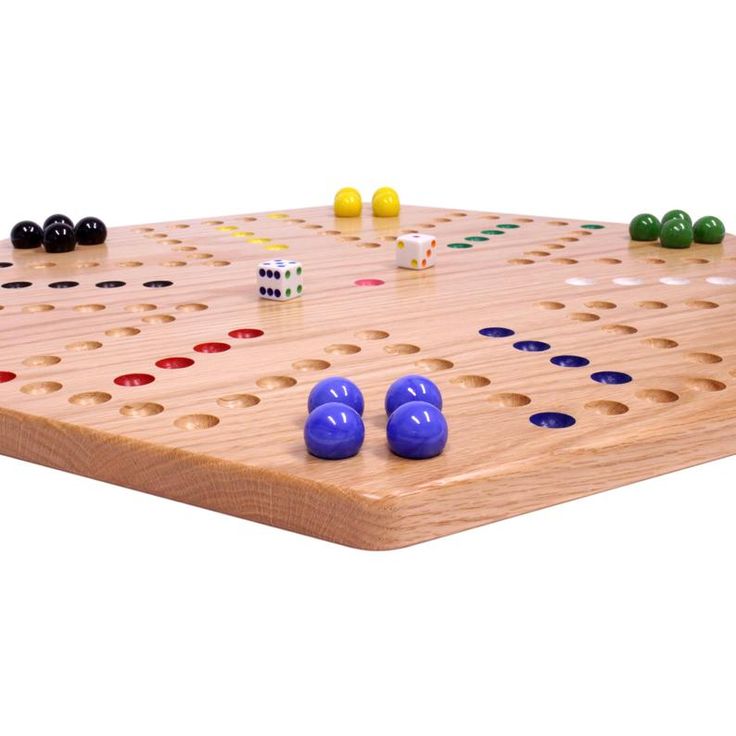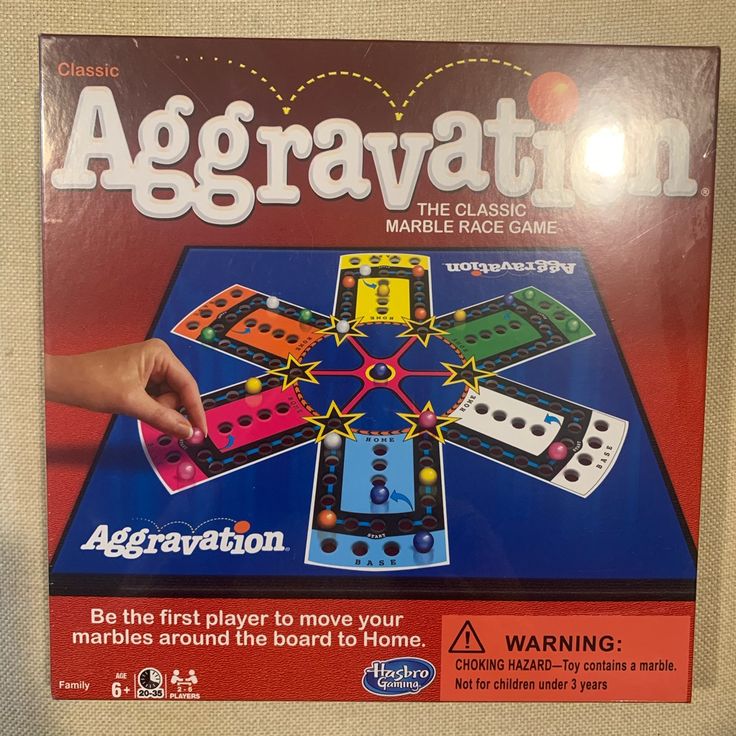Introduction
The Aggravation board game is an iconic staple in many households, celebrated for its easy-to-learn rules and engaging gameplay. Originating in the 1960s, this game has provided countless hours of entertainment and bonding for family and friends alike. It’s a strategic game that appeals to players of all ages, making it an excellent choice for family gatherings, game nights, and everyday fun. With its blend of chance and tactics, Aggravation invites everyone to join in and enjoy the excitement of racing their marbles around the board while plotting against their opponents. In this comprehensive guide, we will delve into the various elements of the Aggravation board game to help you enhance your gaming experience.

The Rich History
The history of the Aggravation board game is fascinating and reflects the evolution of gaming in America. It draws inspiration from ancient games such as “Pachisi,” which originated in India and was adapted in America as “Parcheesi.” These games laid the groundwork for Aggravation, which was patented in the mid-20th century. The game’s simple design and colorful board make it visually appealing, while its straightforward rules ensure that players can quickly grasp the basics. Over the years, numerous families have adopted it as a beloved tradition, often passing it down through generations.
As game producers have continued to create various versions and designs, Aggravation’s popularity has remained strong. Its adaptability is one reason why it has not only withstood the test of time but continues to flourish in the competitive board game market. Many people might recall childhood memories of playing Aggravation with family members during holidays or birthday parties, making this game lasting in tradition and significance.
Setting Up the Aggravation Board Game
Setting up the Aggravation board game is straightforward and quick. Ideally, the game is played with four to six players, though it can accommodate any combination within that range. To start, each player selects a color and takes the corresponding game pieces—four marbles for competitive play. After everyone has chosen their color, players place their marbles in the designated starting area, known as the ‘home base’.
Before gameplay begins, it’s essential to have the die accessible, as rolling it determines the number of spaces players can advance their marbles. To kick off the game, players take turns rolling the die. The objective is to move all four of your marbles around the board, avoiding pitfalls set by other players as they race towards their home area. The game board’s design features paths, shortcuts, and spots (referred to as “home spaces”) that all come into play for exciting strategic moves.
Understanding the Rules
Understanding the rules is crucial for maximizing enjoyment while playing Aggravation. The primary goal is to move all four marbles from your starting area, around the board, and into your home area. Each player takes turns rolling the die, allowing them to move one marble based on the number rolled. A player can only move a marble out from the home base by rolling a five, creating a unique strategy around this specific roll requirement.
It’s important for players to be aware that if they land on a space occupied by an opponent’s marble, the opponent’s marble is sent back to their starting area—creating a competitive edge and a strategy layer. Players can use this rule to their advantage by calculating the risks of advancing versus blocking opponents. There are additional rules concerning shortcuts, re-entering home spaces, and how many spaces you can move based on the die’s results. Maintaining awareness of these rules enhances overall gameplay and helps prevent disputes during competitive rounds.
Effective Strategies for Winning the Aggravation Board Game
Winning at Aggravation requires a blend of luck and effective strategy. Here are some valuable strategies to consider:
- Protective Moves: Always consider having at least one marble in a position that prevents an opponent from easily sending it back. A strategically placed marble can be a valuable asset throughout the game.
- Aggressive Stance: Do not hesitate to hinder your opponents by landing on their marbles. While this may seem intimidating, blocking their progress can give you a significant advantage.
- Balancing Risks: Sometimes, moving multiple marbles forward can be beneficial, but don’t forget to evaluate how placing risk on one marble can help in securing your lead.
- Timing the Board: Understanding when to enter your home zone can make a big difference. Stay alert to how the game is progressing and your opponents’ movements.
- Puzzle Thinking: Think several moves ahead, as the die may not always roll in your favor, but planning can help mitigate unfavorable rolls. Learn how to adapt your gameplay based on the evolving board state.
- Keep Your Options Open: Always look for opportunities to reroute or adapt your moves based on your opponents’ strategies. Flexibility can often lead to unexpected victories.

By employing these strategies, players can create exciting dynamics that will keep the game engaging and fresh, regardless of how many times they’ve played before.
Fun Variations
Many families enjoy creating unique variations of the Aggravation board game, adding a personal touch that keeps the game exciting. Some popular house rules include:
Entry Alternative
- Flexible Entry Rules: Consider introducing rules that allow players to enter their home spaces using different die rolls. Instead of solely relying on rolling a five, players could be allowed to enter if they achieve a specific combination of numbers, like rolling a three followed by a two.
- Task Completion: Another interesting variation could involve players completing a specific task to gain entry into their home space. This task could be a simple challenge, such as answering a trivia question or performing a physical action like clapping three times.
- Player Variation: You could allow players to draft their entry criteria at the beginning of the game. This can add an extra layer of strategy, as players may weigh the risk versus the reward of opting for more difficult entry rules.
Power Cards
- Introducing Power Cards: Consider adding power cards to the game, which are special cards that grant players specific abilities. These cards could be randomly drawn at the start of the game or obtained through certain actions during gameplay.
- Variety of Effects: Power cards could have a variety of effects, such as allowing players to take an extra turn, move an additional space, or even trade places with another player. This adds an exciting element of surprise and strategy, as players must decide when to use their cards for maximum impact.
- Limited Quantity: To balance the power they possess, you can limit the number of power cards drawn or held by a player at one time. This encourages players to use their cards wisely, making each decision critical to their overall strategy.
Time Limit
- Imposing a Time Limit: Implementing a time limit on each player’s turn can significantly elevate the game’s pace and intensity. For example, giving players a minute to make their move would encourage quicker thinking and decision-making.
- Increased Excitement: A time limit can add an exhilarating element to the game, as players feel a rush while trying to strategize and execute their moves quickly. This urgency can lead to unexpected actions that may change the course of the game.
- Preventing Off-Topic Discussions: By enforcing a time limit, you also minimize the likelihood of lengthy discussions about strategy or off-topic conversations that can slow down gameplay. This keeps players focused on the game and enhances the overall experience for everyone involved.
These variations help refocus the game and keep everyone invested. The adaptability of Aggravation makes this possible and allows players to create a memorable experience tailored to their group’s preferences.
The Enduring Appeal
Why has Aggravation remained a fan favorite across generations? Its charm lies in the mixture of luck and strategy, along with the social interaction it fosters. Unlike many modern video games that separate players and create isolated experiences, Aggravation encourages face-to-face competition and bonding moments.
As players gather around the board, laughter, friendly taunts, and good-natured competition fill the air. The simplicity of the rules combined with deeper strategic thinking undoubtedly keeps players engaged and coming back for more. Furthermore, the game is accessible to new players, allowing families to introduce young children to the joy of board gaming.
Conclusion
Ultimately, the Aggravation board game has established itself as a classic fixture in family entertainment. With its engaging gameplay, social interaction, and strategic depth, this game makes it easy to understand why it remains popular. Whether you are a seasoned player or someone hearing about this classic for the first time, gathering family and friends around the board can lead to unforgettable moments.
As we play and enjoy the Aggravation board game, we make connections and create cherished memories that last a lifetime. So, roll the die, move your marbles, and welcome the friendly rivalry into your home with the Aggravation board game!







